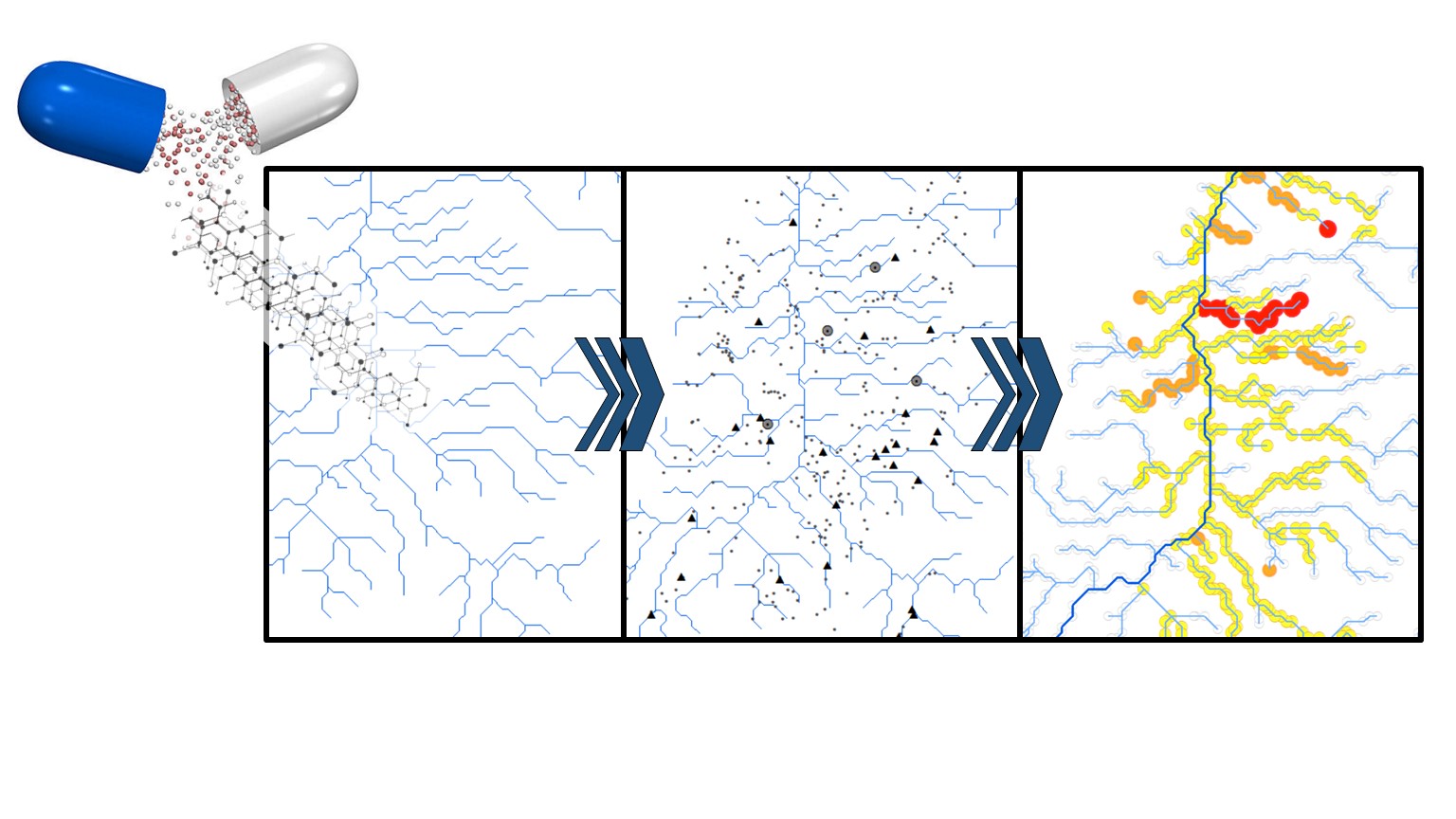Presence and dispersion of pharmaceutical compounds in the upper Cauca River basin (Colombia)

Pharmaceutical compounds (PCs) are excreted largely unmetabolised, entering drainage networks at µg L⁻¹–ng L⁻¹ levels that conventional treatment fails to eliminate, generating pharmacological and ecological risks. Colombia illustrates the problem: medicine purchases are rising while only 52 % of municipal effluents receive treatment. This study applied the ePiE fate-exposure model to estimate environmental concentrations of the analgesics paracetamol, naproxen and ibuprofen in the Upper Cauca River Basin (UCB). After data compilation, calibration and validation, ePiE reproduced measured paracetamol and naproxen levels within one order of magnitude; ibuprofen was under-predicted but remained the most hazardous.
Predicted environmental concentrations (PECs) exceeded predicted no-effect concentrations (PNECs) at 15.9 % of sites for ibuprofen, 6.6 % for naproxen and 1.9 % for paracetamol, indicating widespread over-prescription, over-purchase and self-medication. Spatial analysis flagged municipalities with critical exceedances. Scenario simulations combining 30 % consumption reduction with upgraded wastewater technology lowered PEC>PNEC exceedances to 0.55 % (paracetamol), 1.85 % (naproxen) and 2.61 % (ibuprofen), proving that isolated measures are insufficient.
The work confirms ePiE’s applicability to Colombian and other Global South catchments and underscores the need for robust national medication-consumption reporting, verification and model input data. Comprehensive mitigation—demand management plus advanced treatment—is essential to safeguard aquatic ecosystems and human health.

